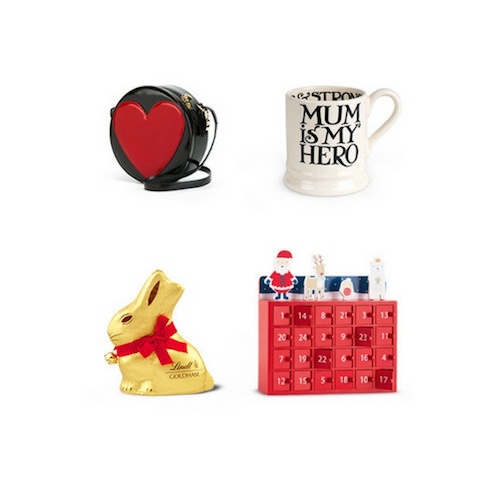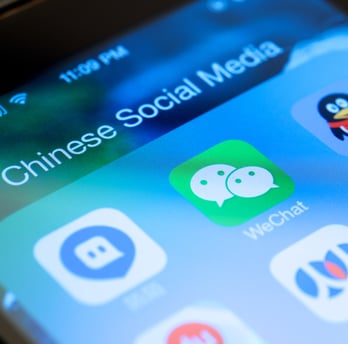WeChat: the most powerful end-to-end marketing channel on earth?
Initially established in 2011 as a lo-fi mobile messaging service, Tecent’s WeChat app has rapidly evolved into one of the most sophisticated and powerful digital apps on the planet.
And yet, WeChat remains largely unknown to many of us in the West. Its user base is concentrated in China, where the likes of Facebook and Twitter are blocked. However, the sheer size and velocity of China’s affluent consumer population, combined with the highest rates of mobile internet usage on the planet — 7 in 10 internet users log in via smartphones, with fewer than half of new internet users owning a desktop or laptop — has created a super-sized, mobile-first digital ecosystem. The rest of the world is rightly sitting up and taking note.
In the space of little over five years, WeChat has evolved into one of the most extraordinary social and marketing success stories of the digital age, and become the envy of many Western rivals (Facebook’s David Marcus who runs Facebook Messenger, recently described WeChat as “inspiring”). Indeed, WeChat is increasingly being held up as a ‘best in class’ leader and blueprint for the global future of digital communication, marketing and commerce.
Let’s take a closer look at just what has made WeChat such a rip-roaring success, what it suggests about the future of an increasingly mobile-first consumer landscape, and consider the opportunities it presents for brands the world over.
The rise and rise of WeChat: an overview
For the uninitiated, WeChat (or 微信 WeiXin in Chinese) was established by the Chinese tech company Tencent (the same firm behind the Chinese version of MSN messenger, QQ), back in 2011.
Today, WeChat’s user base has grown to over 800 million and counting. Initially, WeChat’s value proposition to users couldn’t have been more simple: free mobile messaging (SMS messaging in China is relatively expensive compared to the U.S. or UK). And with so much of the Chinese populace having only ever been a mobile-only internet user this was a pretty big deal.
But Tencent didn’t leave it at that. From 2011 onwards, they saw opportunities to mature the app’s capability in ways that connected the gaps in what had previously been a disparate mobile internet experience — and what pretty much still is a disparate mobile internet, in the West. For example, beyond its bread and butter instant messaging feature, WeChat has gone on to develop innovations such as:
Moments: a mobile-only version of Facebook’s timeline function... of sorts. You post via your profile, and it can be seen on your contacts’ Moments.
Official subscription accounts: a marketer or brand publisher’s dream, it allows an organization to set up and offer subscription-only accounts to share content with their audience. Parallels to Facebook’s pages here.
Microsites and ‘apps-within-the-app’: a real gamechanger, enabling the setup of custom websites or mini-apps, run within WeChat itself. In effect, this has created a mobile ecommerce oasis for brands of all shapes and sizes.
WeChat e-wallet: WeChat’s (and therefore China’s) answer to Apple Pay, allowing users to use the app itself as a method of payment in a range of stores (either digital or physical). Payment can be made simply by scanning a QR code or transferring payments to other users.
One app to rule them all — China and the future of mobile marketing
What WeChat has achieved in China, is a feat the rest of the world’s marketers have only ever dreamt of. That is, complete containment and control of end-to-end customer journeys, within one ‘super channel’ touch point.
A little compare and contrast with the rest of the world, helps to bring this home. Whereas in the West, users turn to WhatsApp for instant messaging, Facebook and Twitter for more public social engagement and content sharing, Amazon and Ebay (among many others) for ecommerce marketplaces, and Apple Pay for virtual payment functionality — in China, there’s WeChat.
In contrast, WeChat has achieved a completely seamless, one-channel customer experience in China. That’s one single source channel controlling and leveraging multiple consumer functions and touch points. The initial customer awareness, the conversation, the product sharing, consideration and purchasing — and even the payment method itself — are literally owned by WeChat.
For this reason, from a marketing perspective, those wishing to tap into the Chinese consumer market, would do well to see WeChat as the absolute go-to channel to leverage. Iconic Western brands, including Burberry, Coach, and British Airways, have been quick off the mark and already reaping the rewards of WeChat’s dynamic, multifaceted capability to influence, delight, and ultimately convert new customers.
Alex Phillips, Head of Sales and Marketing at LNP China, which specialises in helping Western companies to do business in China said:
“WeChat undoubtedly demonstrates just how advanced China's digital industry is. The vast range of constantly evolving features demands dedication and a tailored strategy in order to effectively target Chinese consumers."
“But when you consider that 98% of Chinese nationals living in the UK use WeChat, the opportunity is there for any business to leverage the platform without having to be in China.”
The specific potential for referral marketing campaigns within this market is plain for all to see. Whereas in the West, we often have to think in terms of ‘stitching together’ a highly disparate landscape of marketing touch points in order really get referral campaigns moving, WeChat pretty much represents the keys (and the gates) to the entire city. To earn the attention of customers within WeChat in China, is to unlock access to that whole ecosystem in one fell swoop.
In conclusion
WeChat’s increasing influence on the global consumer industry, is two-fold. First of all, for Western brands wishing to get a piece of the booming Chinese consumer market pie, WeChat feels like an absolutely essential channel to understand how to use and leverage effectively.
Secondly, even from the vantage of point of distant observer, Western marketers would do well to take note of WeChat’s beyond-impressive ability to create completely seamless, mobile-first consumer experiences for Chinese users, and consider how that represents the shape of things to come for the rest of us.
On both of these fronts, we’re keen to learn more about WeChat’s increasing influence and capability within the referral marketing mix. We’ve recently launched WeChat as a sharing option for referral campaigns, so we’ll be eager to see how it’s being received by our clients’ customers. Watch this space.

Never miss another update
Subscribe to our blog and get monthly emails packed full of the latest marketing trends and tips






